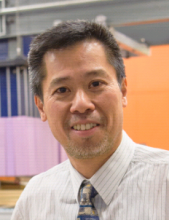- PhD, Nouveau-Brunswick
- MSc, Colombie-Britannique
- BSc, Victoria
Intérêts de recherche
- Désign, fabrication et modélisation du combustible nucléaire;
- Sûreté, permis d'exploitation et physique du réacteur nucléaire;
- Risque et fiabilité de l'exploitation et marges de sûreté.
Publications récentes
- I. Hoffman, B. Lewis, P.K. Chan, K. Ungar, « Analysis of 22Na Using a Spectral Summation Technique on High-volume Aerosol Samples », Journal of Environmental Radioactivity, 151, 169, 2017.
- B.J. Lewis, P.K. Chan, A. El-Jaby, F. Iglesias, A. Fitchett « Fission Product Release Modelling for Application of Fuel-Failure Monitoring and Detection - An Overview », Journal of Nuclear Materials, 489, 64, 2017.
- P. Samuleev, P.K. Chan, H.W. Bonin, B. Ball, S. Jenner, C. McEwen and P.C. Hungler, « RMC SLOWPOKE-2 Facility: 30 Years of Service to the Department of National Defence », Canadian Nuclear Society Bulletin, 38 (1), 23, 2017.
- G. Bentoumi, B. Benson, P.K. Chan, M. Gaudet, G. Li, L. Li, P. Samuleev, B. Sur, « Reactor Power Monitoring using Cherenkov Radiation Transmitted Through Small-bore Metallic Tube », Annals of Nuclear Energy, 114, 86, 2018
- I. Hoffman, P.K. Chan, B. Lewis, « Circulation of Cosmogenic 22Na using the Global Monitoring Network of the Comprehensive Nuclear-Test-Ban Treaty Organization », Journal of Environmental Radioactivity, 187, 8, 2018.
- S.J. Bell, P.K. Chan, A. Prudil, « A Thoria and Thorium Uranium Dioxide Nuclear Fuel Performance Model: Prototype and Knowledge Gap Assessment » , ASME Journal of Nuclear Engineering and Radiation Science, 2018
